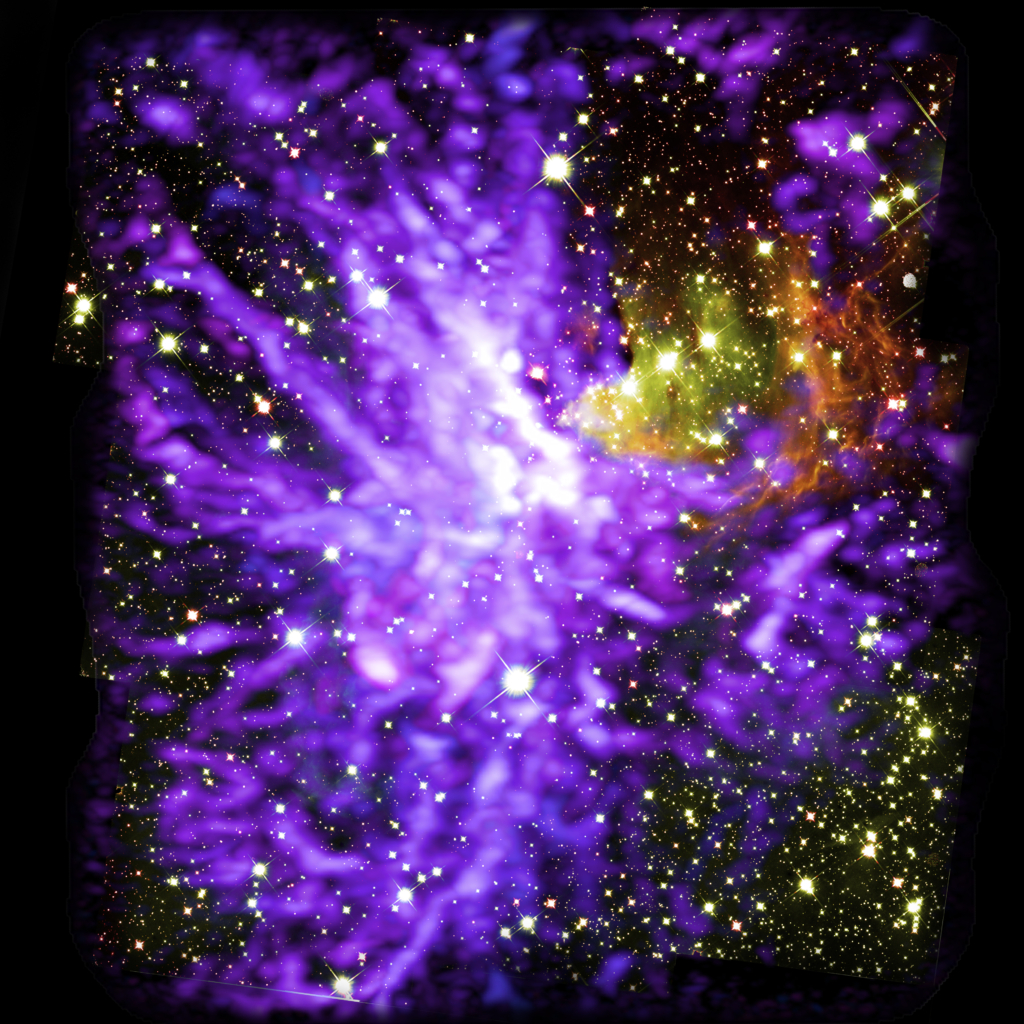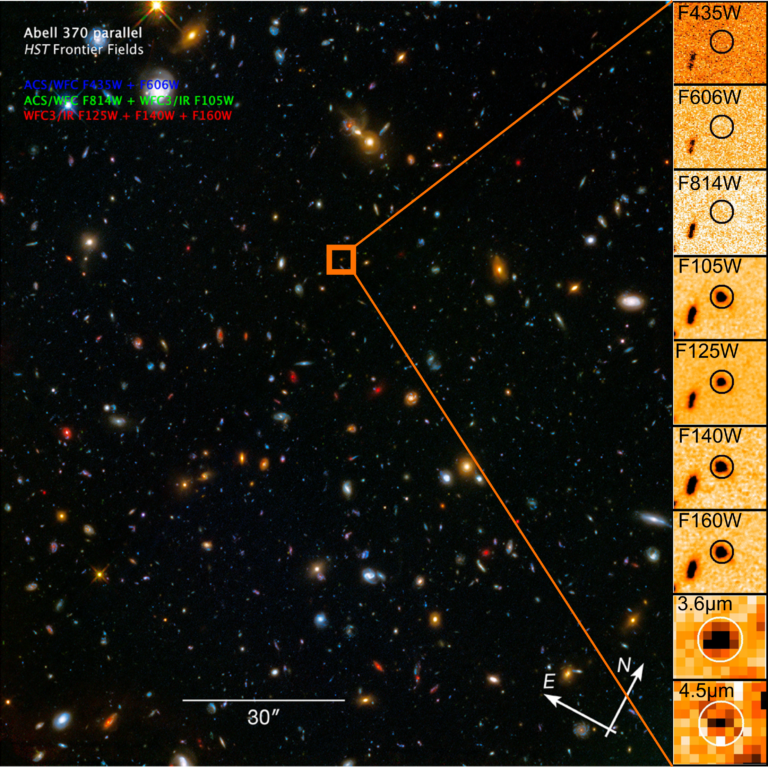Media
Transcript
One of the things we constantly hope to find as we scour the universe with telescopes is a solar system that looks like ours. At this point in our technology, we can’t see worlds like Mercury, and I suspect Mars-like planets are beyond our capabilities too, as are outer worlds. Basically, we really want to see a twin of our solar system, but we don’t have the ability. We don’t know if our kind of a solar system is common or rare, and at this point, we can’t know it. We are finding pieces of our solar system reflected in other systems, however. We see Oort clouds and Kuiper Belts. One earth-like world has been found orbiting a Sun-like star. Each of these pieces helps confirm that what we see around us isn’t unique. These confirmations also help us see our models for our solar system’s evolution in context. We weren’t around to see how our solar system formed. We can’t look back in time to observe our past. All we can do is look for solar systems like ours that are doing things we think our solar system did.
One of the more fantastic parts of our solar system’s evolution is a theoretical time when the planets Jupiter and Saturn orbited the Sun in resonance, with Saturn orbiting twice for Jupiter’s once. The combined gravitational tugs of the worlds aligning over and over and over are thought to have sent myriad objects, including Neptune and Uranus, into wild new orbits, while triggering the great heavy bombardment of asteroids into every rock surface. This model, called the Nice model for the city where a group of planetary scientists worked out these ideas, does a solid job explaining our observed solar system, but we can’t test it except through computer simulations.

Now, however, we have finally spotted one solar system with worlds in resonance, and we can see the orbits changing and the pulls this creates. While this isn’t proof that our solar system had this kind of resonance, it is evidence that this isn’t an uncommon situation.
The system WASP-148 has two close-in planets, orbiting in a one-to-four resonance, with the inner world orbiting every nine days, while the outer takes about 36 days. In a new paper in the journal Astronomy & Astrophysics, a team lead by Guillaume Hébrard has described how these worlds don’t orbit at the normal rates we see in isolated worlds. To simplify things, if these worlds orbited in perfect circles, we would see them move at constant rates. Instead, the worlds race to line up and linger together in their passages. These effects can be seen in radial velocity measurements. This is the first time this kind of an orbital dance has been seen on exoplanets, and it is a cool bit of science, showing us that these kinds of things do happen, and could have happened here.
This also implies that if there is a lot of debris to be flung around in that solar system, the worlds we’re looking at likely see their skies often lit up with the light of incoming asteroids and comets. So while this discovery is cool, I don’t think we should visit.
To be fair, right now, the skies on our world keep lighting up as well, for more man-made reasons.

For many across North America, this is a holiday weekend. Canada celebrated its confederation on Wednesday, and the United States celebrates its independence tomorrow. As a reminder, we won’t be streaming next week and will be both taking some time off and using the week to update our websites and plan future content.
Holidays are, for better or worse, a favorite time for missions to do amazing things and for press releases on thematic topics to be released. This weekend we can celebrate the anniversary of New Horizons passing Pluto, of the Pathfinder rover reaching Mars, and of a lot more events timed to allow the most Americans possible to enjoy the science, while forcing the maximal number of scientists and science communicators to work through a holiday.
This year, we don’t have any big events, but when it comes to seasonally chosen press releases, the big observatories did not disappoint. The National Radio Astronomy Observatory released a spectacularly weird radio image of the star-forming cluster. Using the Atacama Large Millimeter/submillimeter Array (ALMA), researchers captured images of filaments of gas streaming into this system. These turbulent streams are fragmenting into dense cores that will ultimately create individual stars. The largest stars in this system have already formed and are visible in a Hubble Telescope image, and the light of these stars is also blasting out gas, making this a chaotic and dynamic system of star formation. In the composite image, the radio image is colored purple and appears as dramatic fireworks over the ruddy Hubble image of star formation.

The National Optical Astronomy Observatory folks also got in on the holiday with the release of an amazing image of the spiral galaxy NGC 925 that highlights the myriad star-forming regions in this system. Each of these open clusters appears as bright pink knots of fireworks in this optical light image, taken with the 4-meter Mayall Telescope.
From lighting up molecular clouds to lighting up galaxies, the European Astronomical Society took things one step further and lit up the universe. To be fair, I think this release was coincident with the holidays but not correlated in any way.
In a new research paper appearing in Monthly Notices of the Royal Astronomical Society with lead author Romain Meyer, researchers announce the discovery of a massive galaxy shining bright just 800 million years after the Big Bang, and they can see how it is a beacon of ionizing radiation that is reionizing a large bubble of the universe around itself. This discovery allows us to better understand how the universe went from neutral gas and reionized and thus became transparent after a several-hundred-million-years dark age in our early universe. It had been thought that either numerous small galaxies lit up, each ionizing a small region around themselves, or that massive systems illuminated massive regions, and of course, a mix of these options is an option itself. This detection indicates that a few bright systems likely emitted most of the ionizing photons, and are responsible for reionizing the universe and ending those cosmic dark ages.

Observing these kinds of fireworks that are all far off in our universe is safe and doesn’t disturb neighboring people, pets, or wildlife. I’d encourage all of you to enjoy the skies safely this weekend. There will be a partial penumbral eclipse of the Moon visible for most the Americas, Europe, and Africa on Saturday night going into Sunday morning, and you can challenge yourself to try and see the Moon dim ever so slightly as it partially enters the Earth’s outer shadow. This will not be dramatic, but the full Moon is easier to image when it’s in penumbral eclipse because it’s just not as bright. Get out, enjoy the sky, and stay safe everyone.
Learn More
Ground-Based Discovery of Two Strongly Interacting Exoplanets
- CNRS abstract release
- “Discovery and Characterization of the Exoplanets WASP-148b and c. A Transiting System with Two Interacting Giant Planets,” G. Hébrard et al., 2020, to appear in Astronomy & Astrophysics (Preprint on arxiv.org)
Stellar Fireworks Celebrate Birth of Giant Cluster
- NRAO image release
- “Gas Kinematics of the Massive Protocluster G286.21+0.17 Revealed by ALMA,” Yu Cheng et. al., 2020 May 8, Astrophysical Journal (Preprint on arxiv.org)
- “Stellar Variability in a Forming Massive Star Cluster,” Yu Cheng et. al., 2020 July 1, Astrophysical Journal (Preprint on arxiv.org)
Cosmic Fireworks — Snapshot of Cosmic Pyrotechnics
Luminous Galaxy Reionizing Surroundings 13 Billion Years Ago
- European Astronomical Society press release
- “Double-Peaked Lyman-Alpha Emission at z = 6.803: A Reionisation-Era Galaxy Self-Ionising Its Local H II Bubble,” Romain Meyer (University College London), Nicolas Laporte (Kavli Institute for Cosmology / Cavendish Laboratory Cambridge), Richard S. Ellis (University College London), Anne Verhamme (Observatoire de Geneve, Geneva, Switzerland + Univ. Lyon1, ENS de Lyon, CNRS, France), Thibault Garel (Observatoire de Geneve, Geneva, Switzerland + Univ. Lyon1, ENS de Lyon, CNRS, France). The paper has been submitted to Monthly Notices of the Royal Astronomical Society.
Credits
Written by Pamela Gay
Hosted by Pamela Gay
Audio and Video Editing by Ally Pelphrey
Content Editing by Beth Johnson
Intro and Outro music by Kevin MacLeod, https://incompetech.com/music/


 We record most shows live, on Twitch. Follow us today to get alerts when we go live.
We record most shows live, on Twitch. Follow us today to get alerts when we go live.